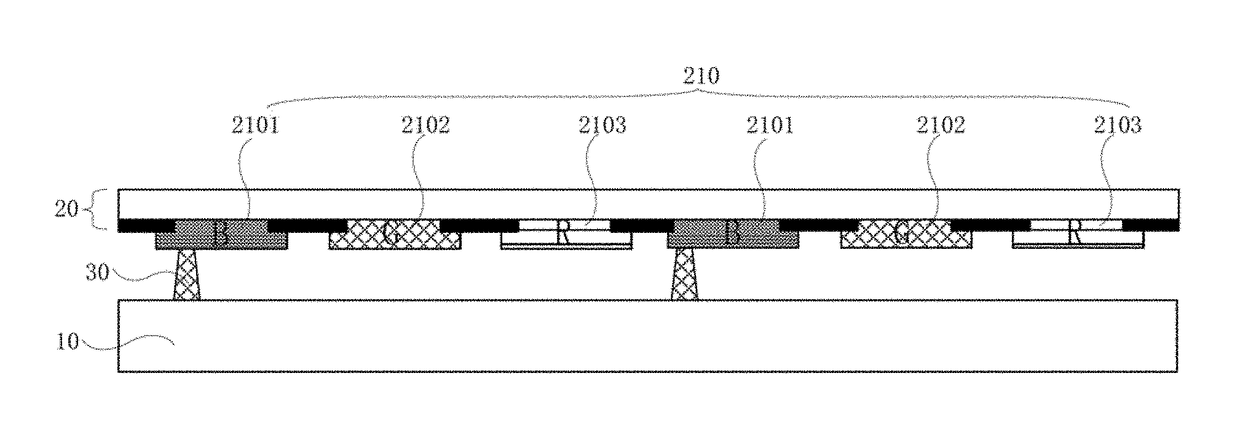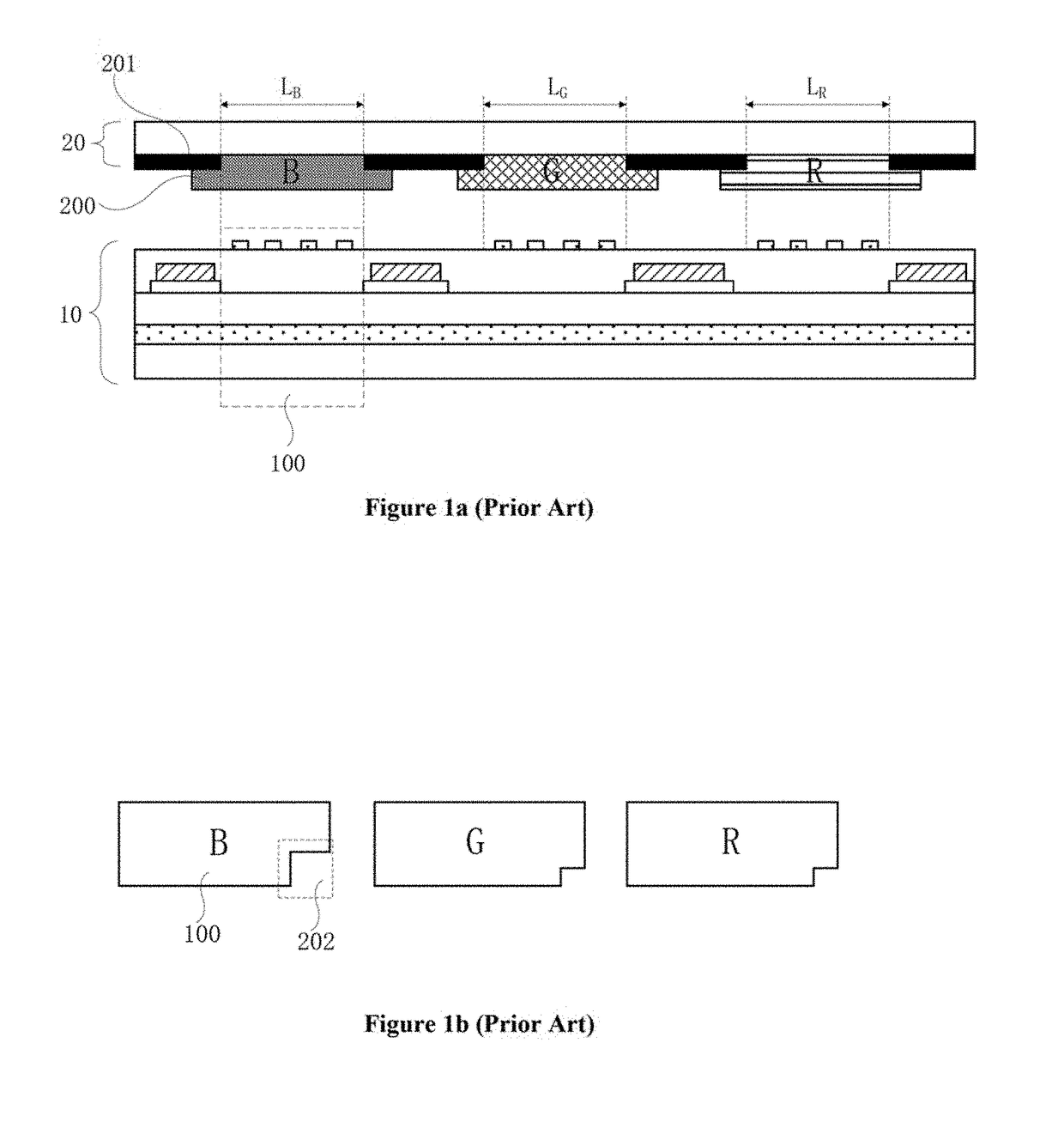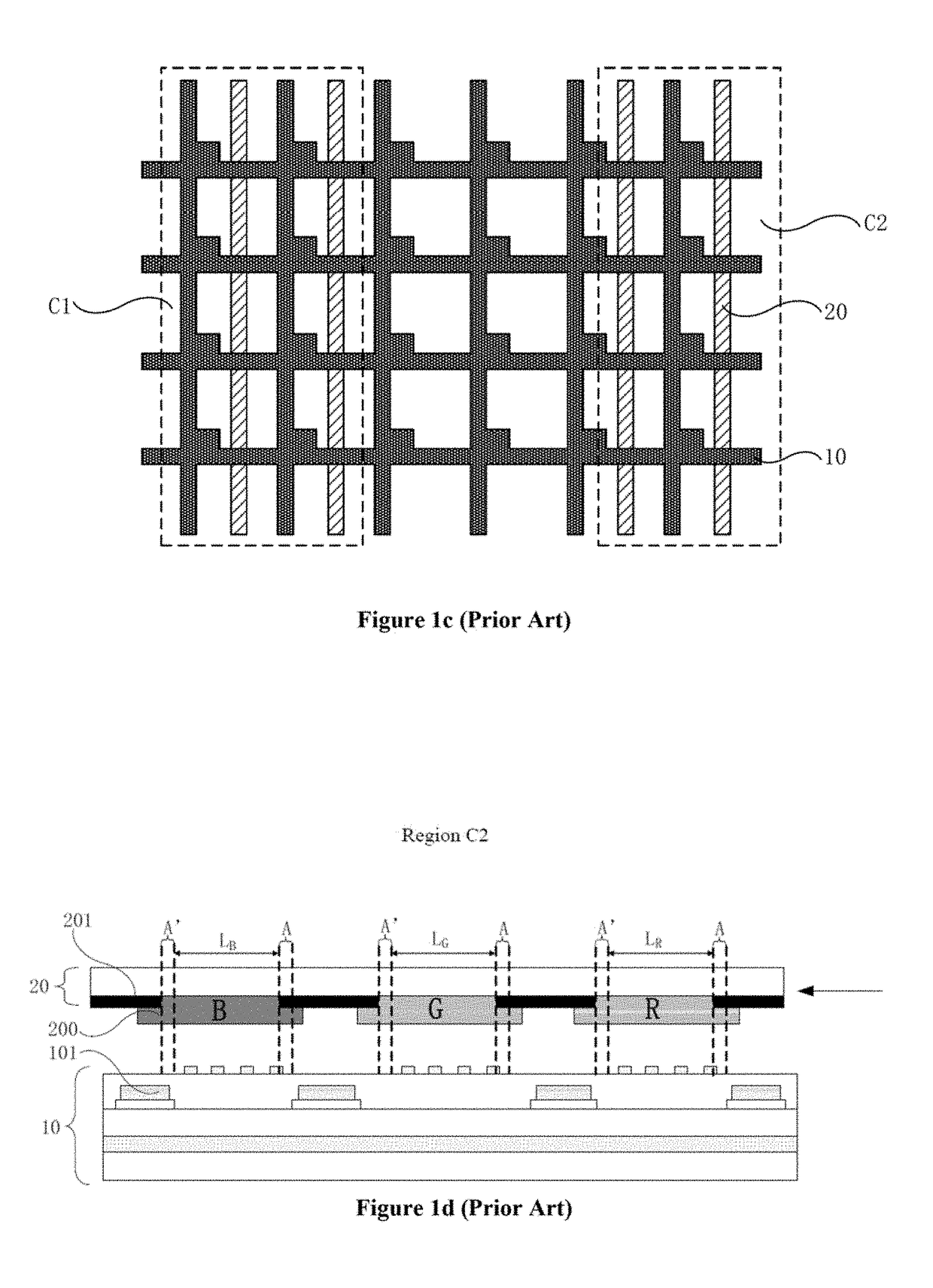Curved display panel and display device containing the same
a display panel and display device technology, applied in non-linear optics, instruments, optics, etc., can solve problems such as display impairment of curved display panels
- Summary
- Abstract
- Description
- Claims
- Application Information
AI Technical Summary
Benefits of technology
Problems solved by technology
Method used
Image
Examples
embodiment one
[0055]Exemplary light-transmitting holes may be formed to reduce the effective light-filtering areas of the second light-filtering unit 2102 and the third light-filtering unit 2103. Monochromatic green (G) light, formed by the white light emitted by the backlight source passing through a second light-filtering unit 2102, may have a reduced intensity. Monochromatic red (R) light, formed by the white light emitted by the backlight source passing through a third light-filtering unit 2103, may have a reduced intensity. Thus, human eyes may recognize the intensities of the green (G) light and the red (R) light to be comparable with the blue (B) light, which is formed by the white light passing through a first light-filtering unit 2102 with a reduced effective display area. The intensities of the blue (B) light, green (G) light, and red (R) light may reach a balanced state. The reduced effective display area may be caused by the spacer disposed at the location of the first light-filtering...
embodiment two
[0063]White light-filtering subunits may be formed to reduce the effective light-filtering area of the second light-filtering unit 2102 and / or the effective light-filtering area of the third light-filtering unit 2103. A white light-filtering subunit may convert light, e.g., green light and red light, passing through the white light-filtering subunit to white light. The chromatic green (G) light, formed by the white light emitted by the backlight source and passing through a second light-filtering unit 2102, may have a decreased intensity. The chromatic red (R) light, formed by the white light emitted by the backlight source and passing through a third light-filtering unit 2103, may have a decreased intensity. Thus, human eyes are not able to distinguish the intensity differences of different monochromatic light. The intensities of the blue (B) light, green (G) light, and red (R) light may reach a balanced state. Specifically, human eyes may recognize the blue (B) light, formed by wh...
embodiment three
[0074]The light transmission rate of a first light-filtering unit 2101 may be increased by reducing the thickness of the first light-filtering unit 2101 and / or increasing the thickness of a second light-filtering unit 2102. In some embodiments, the light transmission rate of a first light-filtering unit 2101 may be increased by reducing the thickness of the first light-filtering unit 2101 or increasing the thickness of a third light-filtering unit 2103. Thus, the green (G) light, formed by the white light emitted by the backlight source and passing through the second light-filtering unit 2102, and the red (R) light, formed by the white light emitted by the backlight source and passing through the third light-filtering unit 2103, may have same or comparable brightness level as the blue (B) light. The blue (B) light is formed by the white light emitted by the backlight source passing through the first light-filtering unit 2101, which has a decreased effective display area caused by th...
PUM
| Property | Measurement | Unit |
|---|---|---|
| diameter | aaaaa | aaaaa |
| area | aaaaa | aaaaa |
| diameter | aaaaa | aaaaa |
Abstract
Description
Claims
Application Information
 Login to View More
Login to View More - R&D
- Intellectual Property
- Life Sciences
- Materials
- Tech Scout
- Unparalleled Data Quality
- Higher Quality Content
- 60% Fewer Hallucinations
Browse by: Latest US Patents, China's latest patents, Technical Efficacy Thesaurus, Application Domain, Technology Topic, Popular Technical Reports.
© 2025 PatSnap. All rights reserved.Legal|Privacy policy|Modern Slavery Act Transparency Statement|Sitemap|About US| Contact US: help@patsnap.com



